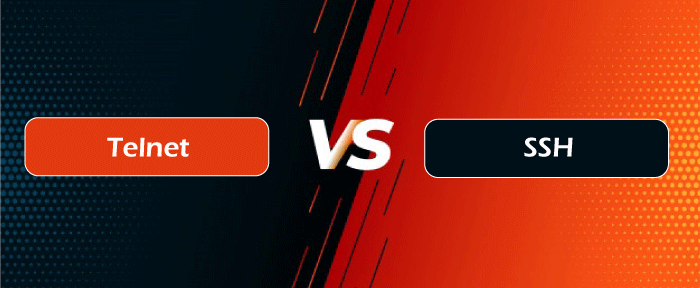Difference between Telnet and SSHIn the past, both Telnet and Secure Shell were frequently utilized to access distant servers. Telnet is the initial protocol that was used in 1969 when the internet was initially launched and is still in use today. However, when it is utilized on public networks, it is ineffective because it was built for private networks and lacks security features. SSH (Secure Shell) was created as a replacement for Telnet. Furthermore, remote terminal service (RTS) enables users at one location to communicate with a time-sharing system at a different location as if their keyboard and display were directly attached to the remote system. The primary distinction between Telnet and SSH is that Telnet is a traditional protocol, whereas SSH is a successor for Telnet protocol with expanded functionality. In this article, you will learn about the difference between Telnet and SSH. But before discussing the differences, you must know about Telnet and SSH with their advantages and disadvantages. What is Telnet?TELNET is an abbreviation for "TErminal NETwork". It is a client-server program that enables users to access any app program on a remote system. Telnet's function is to give services to the user on the remote computer system and to transfer the output to the local computer system. It aids in the establishment of a link to a remote system such that the local terminal resembles a terminal in the remote system. Telnet operates on port number 23. Telnet is an excellent tool for testing or troubleshooting remote web or mail servers and remote access to MUDs and reliable internal networks. How does Telnet work?Telnet offers users a bidirectional interactive text-oriented communication system that uses an 8-byte virtual terminal connection. User data is interpolated in-band with telnet control information through TCP. It was widely utilized on a terminal to perform operations remotely. The user makes the connection to the server via the Telnet protocol, which is entered into a command prompt using the following syntax: telnet hostname port. After that, the user runs commands on the server by typing particular commands into the Telnet prompt. The user terminates a Telnet command with Telnet to stop a session and turned off. Advantages and Disadvantages of TelnetThere are various advantages and disadvantages of Telnet. Some advantages and disadvantages of Telnet are as follows: Advantages
Disadvantages
What is SSH?SSH is an abbreviation for "Secure Shell". It is a network protocol that is frequently utilized to remotely access and control devices. It is the main protocol for accessing network hardware and servers over the web. It enables you to run commands on a remote system and makes it easier for you to log into another computer over a network. You may transfer the data files from one computer system to another. SSH protocol encrypts the traffic in both directions, which aids you in preventing password theft, trafficking, and sniffing. It also offers some additional features, including public key authentication, server authentication, compression, port forwarding, X11 forwarding, and file transfer. It also offers remote command execution. When you login into a system, a pseudo-terminal is allocated to your session, which will remain active until you expressly log out. It includes some features such as secure file transfer, port forwarding, and secure command shell. 1. Secure Command Shell It enables a user to remotely view the directories content, change files, and access custom database apps. 2. Secure Transfer File It functions as a secure shell protocol subsystem, essentially an additional protocol built over SSH to handle file transfers. 3. Port Forwarding It is also known as tunnelling and offers minimal security for TCP and IP applications. SSH Protocol LayersSSH protocol mainly contains three types of layers. These are as follows: 1. Transport Layer It enables secure communication between the client and server, monitors data encryption and decryption, and secures the connection's integrity. It also carried data caching and compression. 2. Authentication Layer It performs the client authentication process. 3. Connection Layer It handles the communication channels after the authentication. Advantages and Disadvantages of SSHThere are various advantages and disadvantages of SSH. Some advantages and disadvantages of SSH are as follows: Advantages
Disadvantages
Key Differences between Telnet and SSHHere, you will learn about the key differences between Telnet and SSH. Some of the main differences between Telnet and SSH are as follows:
Head-to-head comparison between Telnet and SSH
Here, you will learn the head-to-head comparisons between Telnet and SSH. The main differences between Telnet and SSH are as follows:
ConclusionSSH is a better option than Telnet in terms of security. Telnet does not offer much security, although it is still commonly used today. However, both Telnet and SSH may be utilized to transfer data to remote servers. Hence, the SSH protocol is strongly recommended.
Next TopicDifference between
|
 For Videos Join Our Youtube Channel: Join Now
For Videos Join Our Youtube Channel: Join Now
Feedback
- Send your Feedback to [email protected]
Help Others, Please Share










